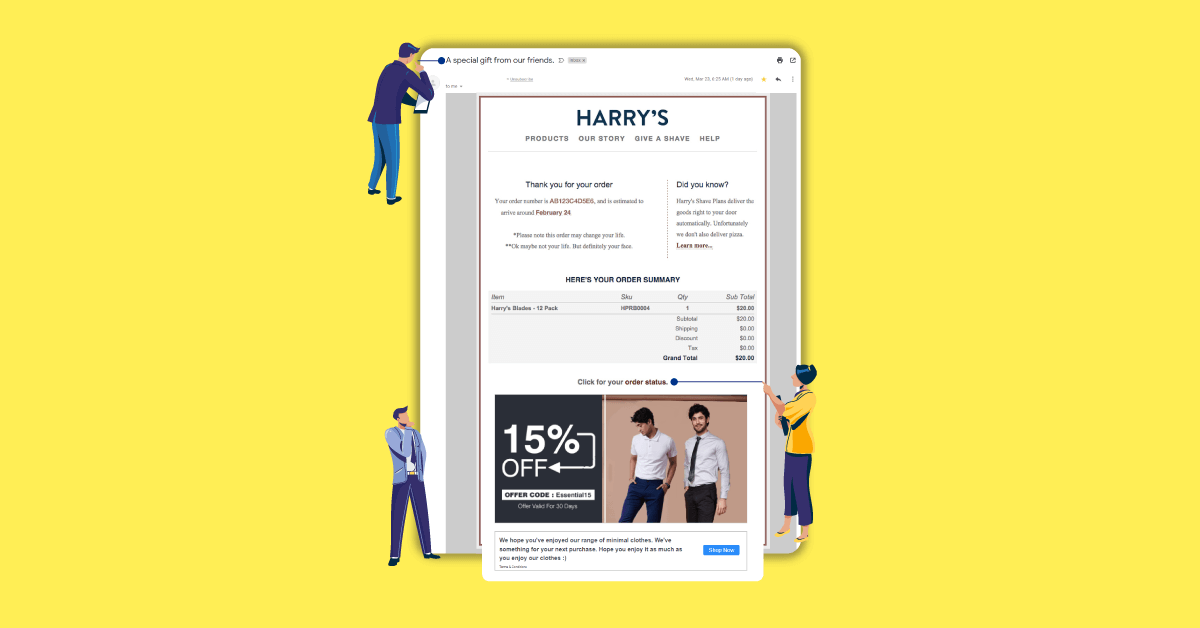Gmail deployed dynamic AMP emails to improve user experience. They did it to boost user experience and Gmail enabled dynamic AMP emails, an improvement that brought interactivity and engagement to emails with no extra work.
The possibilities of AMP emails are enormous; they may be used to the benefit of e-commerce companies.
In this blog, we’ll go through how e-commerce can use AMP email marketing and sales campaigns to its advantage.
What exactly is an AMP for email?
Marketers can also use AMP for an email with the accelerated mobile pages framework. Aakash Sahney, Product Manager of Gmail and Chat on Google’s official blog describes it as – a great way for developers to generate more engaging, interactive, and actionable email experiences.
What are some of the most common uses for AMP for email?
You’re probably curious to know if you can accomplish everything possible with AMP for email as you can with AMP.
The answer to that is “no”.
But, while AMP email is more flexible than regular email, it is not nearly as limited. While you can’t use ALL of AMP’s instructions in Gmail, you may still create a rich user experience. The following are some things you can do with your AMP emails:
Dynamic Email Content
To date, email content has been mostly static. Other than reading, watching, or clicking through, the user has no other way to interact with it. With AMP for email’s dynamic content capabilities, users may engage more easily by providing information such as name changes or new product offerings. Here are some examples of dynamic content components you’ll be able to use with AMP for email:
- Amp-form: This is the form element of AMP. It enables designers to create forms in email that users can complete.
- Amp-selector: This is a form-specific multi-select widget.
- Amp-bind and amp-state: In AMP, a simple scripting language that allows you to change the state machine of components for interactions between elements. It may also add action to certain events. For instance, Amp-state is used to get the initial state machine variables over the internet.
- Amp-list: It fetches JSON data remotely.
- template type=”amp-mustache”: To display the results of an amp-list query, you’ll need to use a Mustache template.
Layout
The framework of standard email is rather set. AMP opens it up with components such as a carousel for media, lightboxes for pictures and text, and accordions for displaying and hiding different portions. Here are some elements you may use to show your email in new ways:
- amp-accordion: User interface sections that display collapsible UI components.
- amp-carousel: This is a component of a carousel UI.
- amp-sidebar: A sidebar for the convenience of browsing.
- amp-image-lightbox: This is a Lightbox to contains images.
- amp-lightbox: This is a Lightbox to contain content.
- amp-fit-text: A component that aids in placing text within a certain area.
- amp-time-ago: It’s a simple way to display timestamps.
Media
Media is your biggest foe in the struggle against a bounce rate, contributing more to load times than any other component. You’ll achieve efficiency and speed while still adhering to design using the two techniques below.
- amp-IMG: It is a widely used AMP component that replaces “image”.
- amp-anim: This helps you embed GIF files.
5 Key Benefits of AMP Email for E-commerce
After the AMP email’s release, there was a lot of excitement about what it would imply for email. There is currently a lot of interest in how this transition will affect e-commerce. The following are some of the major advantages of utilizing AMP Email Automation for e-commerce:
Information that is automatically up-to-date
AMP for email can help emails stay up to date, so there’s no need to send new ones all the time. It also reduces the number of incoming emails in the recipient’s inbox so they don’t have a large batch.
You can surf the Internet through the email
How many times does your client click on an email link that takes them to another website? AMP email empowers the beneficiary to avoid having to go from page to page, much as it helps them finish all chores and errands without leaving the inbox.
Promote your business using an effective marketing strategy.
You can use it to make and send interactive emails that allow your clients to view picture assets, respond to Google Docs’ comments, take part in surveys, plan an appointment, and more. This usefulness promotes supporter engagement by extending the time they spend reading your emails.
Access the checkout process within the email
AMP enables e-commerce businesses to sell goods or services directly within emails. Customers can look at the photos and choose different options, such as color, size, and quantity, before adding items to their shopping cart without going to an online store. You may use this same technique for abandoned cart emails.
Take advantage of the superior security technology for AMP emails
AMP is a typeface that encrypts information from other sources to make AMP emails safe. It also aids internet company customers to feel confident and secure by preventing commercial parts in AMP emails.
Use interactive email content to increase conversions
In a nutshell, the goal of AMP is to make your audience more engaged by making it easier for them to interact with emails in real time.
More than simply speeding up the page, AMP adds value to your crowd by allowing them to engage with emails much more readily. Leave a comment, go through a product page, fill out an inquiry form, look at a photo exhibition, and enter an email address – the email transforms into a webpage-like document complete with all the features you’d expect. Can you open new tabs? Nah. Are there any sidetracks on this site? Who needs ‘em? By eliminating clicks and time while increasing engagement and providing another constant web-based business experience right in their inboxes.
Dynamic material isn’t only a play area for your end customers. It genuinely transforms. According to one research of 244 advertisers from large business levels with revenues up to $1 billion per year, dynamic content generated twice as many changes as standard email content.
Ending Note
According to a Litmus poll of the 55.6 percent that are familiar with AMP for email, 55.4 percent said they were or extremely likely to use it:
With Gmail, you may send emails directly to your subscribers with the campaign. Users can subscribe and unsubscribe from your campaigns quickly and painlessly, which makes it easier for them to interact with organizations via email.
The benefits of making interaction easier for both parties are always recognized in terms of ROI.
If you’re ready to use AMP emails, automate them with Wigzo. Create customer workflows and trigger the right user content for maximum conversion flawlessly.
Try Wigzo for FREE now!













